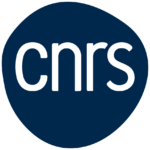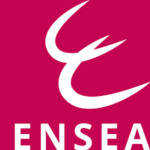Launcher
Tremplin
Interdisciplinary research program
The ETIS laboratory has included three strategic and complementary actions in its 2020-2024 project. They concern the implementation of new tools to support :
- The emergence of unit projects at the interfaces of the teams – Tremplin,.
- The search for financial resources.
- The strengthening of human resources.
The Tremplin mechanism responds to a twofold challenge: to avoid scientific dispersion and to position ETIS as a leader on strategic themes at the national and international levels. Through a dedicated scientific animation budget (internal and decided annually by the Scientific Council in the light of the results obtained over the past year), the laboratory will support the emergence of integrated projects at the interface of the teams and responding to scientific questions linked to priority themes, the development of which will be discussed by the Scientific Committee.
In 2021, the ETIS laboratory supported 3 “Tremplin”:
1
Mobility
led by Dr. Nicolas Cuperlier (MCF CYU)
This interdisciplinary research program addressed scientists from the modelling of cognitive mechanisms to their in situ testing on large-scale demonstrators. Three main themes were the focus of internal meetings and seminars: modelling of cognitive processes; low footprint computational architectures; behavioural analysis.
2
Semantic and context-aware 6G wireless communications using AI
led by Prof. Arsenia Chorti (PU ENSEA) and Prof. Dimitris Kotsinos (PU CYU).
In the framework of this multidisciplinary research action, a series of questions around the role, objectives and operation of semantic integration in 6G networks, including: How to jointly optimise semantics and signal level compression when the utility function includes both aggressive latency and low congestion constraints; How to evaluate the security level required in the QoSec framework taking into account the context and semantics of the communication? How to measure the quality and reliability of semantic and contextual information? How to efficiently locate and contextualise the actors and devices involved in a highly complex and dynamic information exchange around the edge cloud ?
3
Non-conventional imaging
led by Dr. Camille Simon-Chane (MCF ENSEA)
This “Tremplin” is based on a research dynamic around the processing of data from event-driven cameras and other non-conventional imaging devices. The different axes addressed here were: the use of event-driven cameras as bio-inspired sensors for object detection; actimetry detection; spike neural architectures; processing by deep AI approaches.
.
Internal call for projects – AXLR (co-fund ETIS)
The ETIS internal call for projects aims at co-financing research actions in support of the laboratory’s scientific trajectory. The co-financing requested is intended to provide a leverage effect for the laboratory.
AXLR covers the following different components :
- Thesis co-funding to support the emergence of innovative scientific projects or projects related to a new breakthrough theme;
- Co-financing of post-doctoral fellows to support the emergence of innovative scientific projects or projects related to a new breakthrough theme;
- Co-financing of technicians or engineers on fixed-term contracts to support the development of internal research platforms at ETIS;
- Co-financing of fixed-term contracts for engineers involved in the development of research projects in partnership;
- Co-financing of medium-heavy research equipment in response to an AAP (SESAME IDF, DIM RFSI, DIM MAP, etc.);
- Financing of equipment included in a PPI;
- Support for new CNRS researchers, recruited on 1 September of the year of the AAP, in the form of a chair for 3 years;
- Co-financing of the laboratory's strategic projects (Tremplin, equality-parity, international development and valorisation).
- Co-financing of the laboratory's computing resources.
In 2021, three projects have been co-funded :


